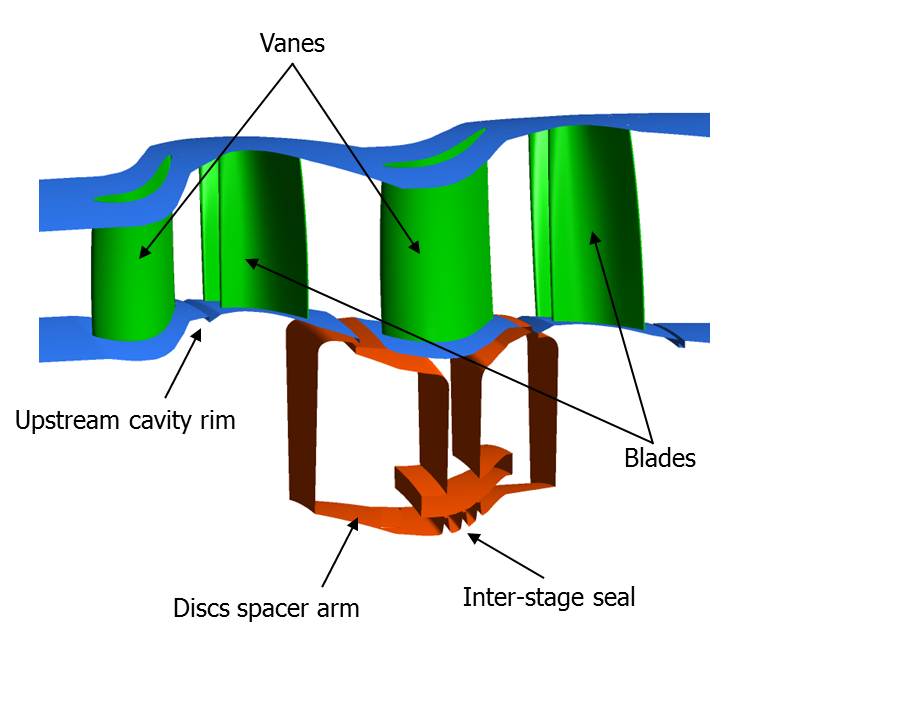Proceedings of ASME Turbo Expo 2012 – GT2012-68592
Reliable means of predicting ingestion in cavities adjacent to the main gas path are increasingly being sought by engineers involved in the design of gas turbines. In this paper, analysis is to be presented that results from an extended research programme, MAGPI, sponsored by the EU and several leading gas turbine manufactures and universities. Extensive use is made of CFD modelling techniques to understand the aerodynamic behaviour of a turbine stator well cavity, focusing on the interaction of cooling air supply with the main annulus gas. The objective of the study has been to benchmark a number of CFD codes and numerical techniques covering RANS and URANS calculations with different turbulence models in order to assess the suitability of the standard settings used in the industry for calculating the mechanics of the flow travelling between cavities in a turbine through the main gas path.
The modelling methods employed have been compared making use of experimental data gathered from a dedicated two-stage turbine rig, running at engine representative conditions. Extensive measurements are available for a range of flow conditions and alternative cooling arrangements. The limitations of the numerical methods in calculating the interaction of the cooling flow egress and the main stream gas, and subsequent ingestion into downstream cavities in the engine (i.e. re-ingestion), have been exposed. This has been done without losing sight of the validation of the CFD for its use for predicting heat transfer, which was the main objective of the partners of the MAGPI Work-Package 1 consortium.
http://proceedings.asmedigitalcollection.asme.org/proceeding.aspx?articleid=1694463

